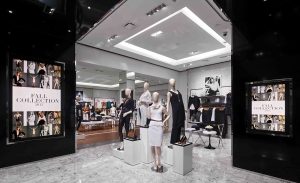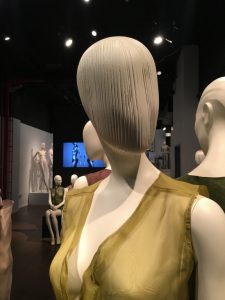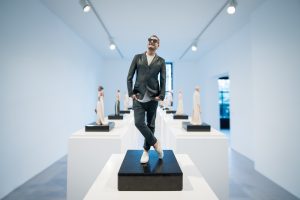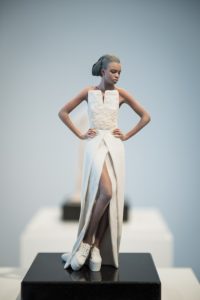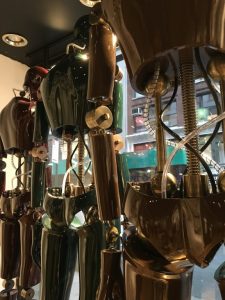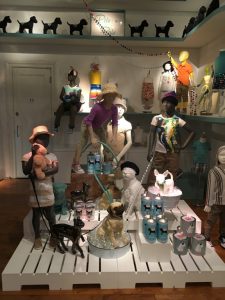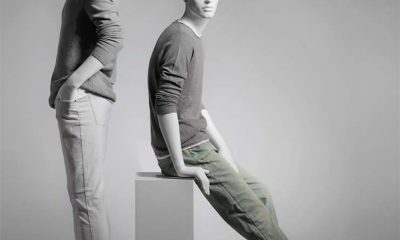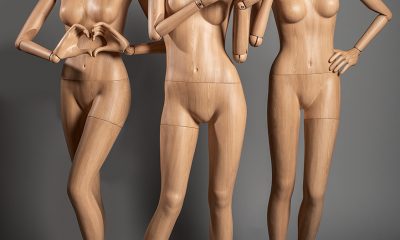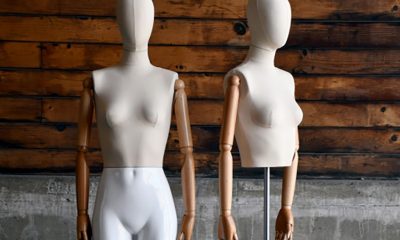The Internet is constantly changing the way people shop. But it’s also turning mannequins into social media icons.
“Blogs, images and comments about mannequins are all over social media,” says Faith Bartrug, owner and founder of Faith Bartrug Design (Columbus, Ohio). “They have become an essential part of popular culture. It’s all about personality.”
She references the Instagram account @Insannequins – a clearinghouse for people’s favorite mannequin installations – as well as other Instagram accounts of people who post fun mannequin images. “The audience for mannequins is alive; social media has embraced it.”
German fashion designer Michael Michalsky created Internet buzz this year with his “Reality” exhibit, featured at Mercedes-Benz Fashion Week Berlin this past January, which included foot-high, 3-D printed mannequins wearing miniatures of his couture.
“They’re called poupées de mode, [or ‘fashion dolls’], and they’re meant to be reminiscent of the miniature fashion mannequins couturiers used in the 17th Century when they traveled to the various courts of Europe to showcase their work,” explains the designer, who founded Atelier Michalsky in Berlin after a decade as worldwide creative director for adidas Group (Herzogenaurach, Germany).
“The lesson for retailers is that the whole entire mannequin is the focus, not just the clothes,” says Bartrug. “The next-generation consumers want to see a story, and the mannequin becomes part of the sell. There’s a new relationship; mannequins are not intimidating and aloof – they’re fun, relatable and real.”
She says consumers want to see more mannequins “like us,” such as the models with physical disabilities that Nordstrom has famously used in its catalogs since 1991. In honor of the International Day of Persons with Disabilities, Zürich-based Pro Infirmis, an organization for the disabled, helped create realistic disabled mannequins that were placed in various storefronts along the Bahnhofstrasse thoroughfare in Zürich in 2013.
EMPTY MALLS, INVITING WINDOWS
There’s a reason the classic silent salesperson still remains an attention-grabbing tool.
“Malls are empty,” says Victor Johnson, senior director, store environment, White House | Black Market (Fort Myers, Fla.). “A typical consumer doesn’t go to the mall anymore to see what’s in the stores. She goes online first, searches the retailers’ sites to see what they have, then goes to the mall to try the outfits on.”
As a result, a retailer’s best chance of capturing that consumer is with a strong window presentation that grabs their attention.
It’s a new take on an old notion: “The window is the most powerful way to bring customers into the store, and it’s the mannequin in the storefront that drives traffic and new customers,” Johnson says.
New research consistently proves customers in a mall won’t react to a sign or graphic in the window, explains Johnson. “If we have three great mannequins in the window, customers will stop to see how the clothes look and how the mannequins are accessorized,” he says. “If she just wants a two-dimensional image, she can get that online.”
For mostly mall-based specialty retailers, such as White House | Black Market, the mannequin’s maximum value ends at the store entrance. “Our typical store is 1800 square feet,” says Johnson. “It’s difficult to have large mannequin presentations inside the store. If our storefront can get her through the door, then our merchandise, our assortments, our price points and the sales staff had better do their work.”
WHAT'S INSIDE STILL COUNTS
Department stores with roomier interiors still depend on strong mannequin displays on the selling floor – not just in windows. “For us, it’s both informational and aspirational,” says James Bellante, svp, visual merchandise presentation, Macy’s Inc. (Cincinnati). “But there’s also the wow factor. We continue to use them in a very theatrical fashion in our windows, and as a group display, for dramatic impact inside the store.”
In a recent display, Bellante describes a set of abstract mannequins he had painted in a super high-gloss navy blue finish, which was dropped into the denim department at Macy’s Herald Square. “It gave the department a whole different mood.”
REALISTIC RESURGENCE
This past December at the Retail Design Collective in New York, Bartrug says manufacturers were offering a wide array of options in their showrooms.
“One manufacturer showed realistic faces but with the eyeballs erased off, as if it were still in progress,” she reports. “Another had studs clad to the faces, almost for shock value; certainly for personality.”
And even with regular realistic mannequins, explains Johnson, the task of giving them personality is falling increasingly on the visual staffs in the stores.
“I like what Kate Spade and Zara do,” he says. “They take a very abstract, stark white mannequin and give it personality, like a strip of black tape on the eye to make it look like the mannequin’s winking. Or using tape to affix big, red pursed lips for Valentine’s Day. If you’re walking through the mall, it’s fun. You’ll stop and notice.”
“It’s options everywhere,” says Bartrug. “Manufacturers are making it possible to put anything together: this type of face, that type of surface material, these types of arms. It’s a great opportunity to use mannequins as a way of branding yourself and having fun.”
Best of all, says Bartrug, “were the groups of mannequins that told stories and evoked feelings, like the baby mannequins with realistic crying expressions in a grocery store shopping cart. It was so real it would make you cringe.”
And, hopefully, make you go into the store.
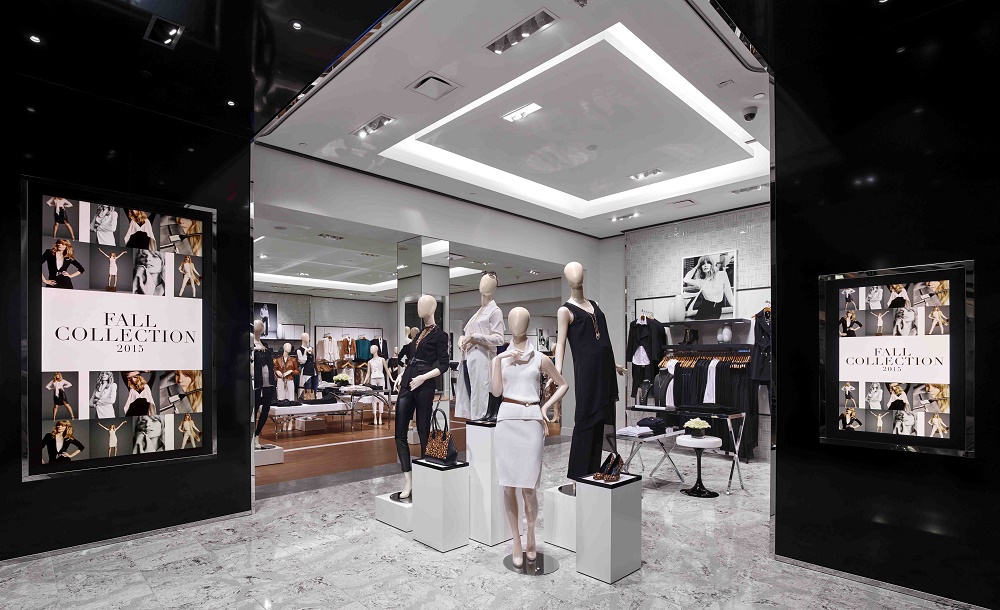

 Photo Gallery3 days ago
Photo Gallery3 days ago
 Headlines1 week ago
Headlines1 week ago
 Sector Spotlight2 weeks ago
Sector Spotlight2 weeks ago
 Headlines1 week ago
Headlines1 week ago
 Headlines4 days ago
Headlines4 days ago
 Headlines2 weeks ago
Headlines2 weeks ago
 Designer Dozen1 week ago
Designer Dozen1 week ago
 Headlines2 days ago
Headlines2 days ago
